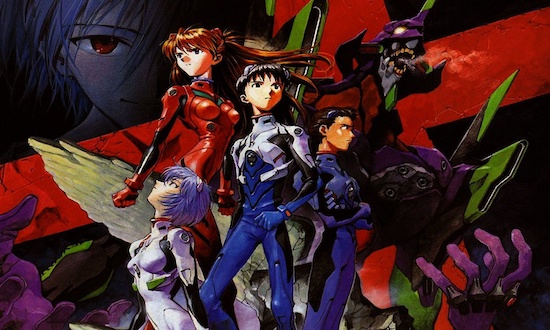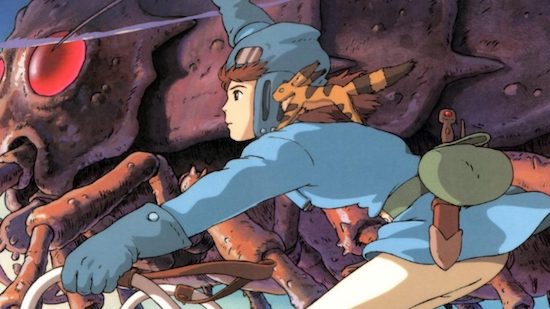2020 is set to be the warmest year on record. This year’s wildfire season in Australia killed or displaced three billion animals, making it the worst ever seen. Siberia is the hottest it’s ever been, and Arctic sea ice hit record lows in July. Add all that to a pandemic and the worst global economic crisis since the Great Depression, and 2020 is shaping up to be the most apocalyptic year in recent memory.
For most of history, the only possible apocalyptic events were random natural disasters – say, a meteor hurtling from outer space, or a super-volcano eruption, or a particularly catastrophic disease. The coronavirus pandemic is a tragedy, but it won’t cause extinction in and of itself – instead, today’s major existential threats are manufactured. We make the atom bombs, and we’re causing the climate crisis. Humanity is willingly trudging towards its own death, spurred on by nothing but its own appetite.
Tellingly, literature and folk tales are full of cautionary tales of human appetite gone awry. But the old stories are only meant for individuals, not for a whole species. It is only Prometheus’s liver being pecked out daily; it is only Faust who is damned for eternity; only Icarus fell into the sea. The rest of us get away with it. Nowadays, with the risk of Armageddon, we don’t have that luxury.
No country has experienced the anthropomorphic apocalypse as viscerally as Japan, and the events of 1945 are burned painfully on the national psyche. So perhaps it’s unsurprising that Japan is the source of so many apocalyptic cautionary tales, especially in its most successful cultural export: anime.
Hiroshima and Nagasaki are obvious touchstones for Akira, Katsuhiro Otomo’s cult classic largely credited for opening the anime floodgates to an international audience in the 1990s. The film is set in 2019, but the opening shot is of Tokyo in 1988 – which is suddenly and unceremoniously consumed by an enormous explosion. There’s no drama, no tension, no context – just instant destruction, making it frighteningly realistic.
We later learn that the explosion was an accident caused by Akira, a young boy turned into a telekinetic superweapon by a secret military project. Akira is a sort of Frankenstein’s monster: he was created by hubristic scientists who didn’t fully grasp what they were experimenting with, which results in tragedy. But Akira is a new breed of cautionary tale, one which appreciates the scale and nature of destruction that humanity is now able to achieve. Unlike in Frankenstein, the disaster is massive, killing millions. Also unlike in Frankenstein, it doesn’t occur just because of the scientists. Akira was designed as a weapon, and he grew out of control through the pressures of a militarised leadership. Akira has much more in common with the atom bomb than with Frankenstein’s monster. It is even a grim irony that he is literally a ‘Little Boy’.
A similar story is found in Hideyaki Anno’s landmark series Neon Genesis Evangelion, which is currently seeing yet another resurgence after being released on UK and US Netflix earlier this year. Like Akira, Evangelion is set several years after a cataclysmic event, known vaguely as the ‘Second Impact’. Again, it is a massive explosion, an image conjured by the memory of the atom bombs. Again, it is the result of an experiment gone wrong: scientists meddling with an extraterrestrial being in Antarctica. The ensuing blast, environmental damage, and conflict claims half the world’s population.

But unlike Akira’s accident, it’s implied that the Second Impact was in fact deliberate: facilitated by a shadowy Illuminati-type organisation called ‘SEELE’ as part of their plan for the advancement of humanity. Here is another clear parallel with Hiroshima and Nagasaki: the sacrifice of millions justified by the powerful. But the Second Impact is an environmental disaster first and foremost, and in SEELE’s eyes it’s a necessary cost of “progress” – just like 2020’s catastrophes are the necessary cost of industrial “progress”. When characters mention the mass extinction of species, rising sea levels, and misinformation about the human cause of the disaster, Evangelion becomes chillingly prophetic.
*
So too is Hayao Miyazaki’s pre-Ghibli Nausicaä of the Valley of the Wind, one of his most overtly ecological works. Here, humanity is at war with a vast “Toxic Jungle”, populated by mutant insects. The power-hungry kingdom of Tolmekia intends to use a superweapon to burn the jungle and conquer the world – but it was this very superweapon which, a millennium ago, wiped out most of humanity and brought the Toxic Jungle into existence. In classic Miyazaki style, it’s up to a young girl, Nausicaä, to fulfil an ancient prophecy and save the world.
As in later Studio Ghibli epics, it’s clear who the villains are: fascist, power-hungry, violently militaristic states hell-bent on world domination, modelled after the Third Reich. But what makes these films special is their heroes. They’re not American-style action heroes, burning Nazis with bloodthirsty vigour like Rick Dalton in Once Upon a Time… in Hollywood (or, indeed, Aldo Raine in Inglourious Basterds). Nausicaä is fundamentally a pacifist, and violence gets her nowhere. She defeats Tolmekia and saves humanity because she is the only human who bothers to understand the insects and the jungle. By establishing an empathetic connection between humanity and nature, she triumphs over the highest industrial achievements of Tolmekia.
Ancient prophecies notwithstanding, Nausicaä is just a young girl: she can be immature, insecure, and naïve like all children. Her “superpower” is simple human kindness. She becomes less a Messiah than a template; an example of how we must live if we’re to save our planet and ourselves. Miyazaki argues that kindness will provide the way forward, not a continued drive for more technology, more “progress”.
Similar stories can be found across other apocalyptic anime, often framed in a fight between humanity and some form of übermensch. The wildly popular Fullmetal Alchemist sees the plucky Elric brothers face off against a group of Homunculi, a race of immortal, amoral superbeings. The Homunculi plan to sacrifice a whole kingdom in order to transcend to godhood, and by all rights they should succeed – they are, at every turn, more powerful than humans. Yet the humans eventually triumph, because of their indefatigable spirit. They keep fighting despite insurmountable odds, because they are bound to each other by love and friendship. One Homunculus, Greed, even declares: “This is what I wanted… I wanted the chance to have friends like these.” For all the Homunculi’s power, they lack the empathy which would make their lives worthwhile. And it’s that empathy which allows the humans to foil their plans and avert Armageddon.

In Neon Genesis Evangelion, SEELE’s plan is to implement “human instrumentality”, which would see all life on Earth melted down and subsumed into one supposedly superior entity. Now, you could write several essays on the various different endings of Evangelion (the original series? End of Evangelion? The rebuilds?), but one consistency is that human instrumentality is ultimately rejected by our protagonist, Shinji. He realises that his humanity – manifested in his relationships with others, through love and friendship – is truly valuable, and that human instrumentality will in fact destroy this humanity. SEELE sought progress, but what’s the use in progress if meaningful life is extinguished?
Akira, too, questions the pursuit of the übermensch, this time in the form of Akira himself. The opening disaster is nearly repeated when ostracised teenager Tetsuo begins to wield the same uncontrollable power as Akira did. All the world’s superweapons are ineffective – Neo-Tokyo is only saved by an emotional connection made between Tetsuo and his childhood friend, Kaneda. Again, technological, industrial, and military progress only leads to catastrophe, and it’s simple friendship that provides salvation.
These stories form a new tradition of cautionary tales. They warn that by attempting to transcend humanity, we risk destroying it. By always pushing forward towards some idea of progress, we can create our own Armageddon. But at the core of these stories, there is a faith in humanity: by consolidating our empathy and love – the very things which make us human – we can save our planet, and save ourselves.
It’s a valuable lesson in a time when Donald Trump is sacrificing Americans on the altar of the economy, Elon Musk is obsessed with a “multi-planet future”, and the UK government is telling its artists to retrain to more “productive” professions. Maybe we don’t need to be more productive. Maybe we don’t need any more planets. If we’re to avoid an apocalypse of our own making, maybe we need to focus on what we already have: our humanity.


